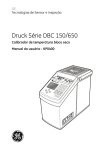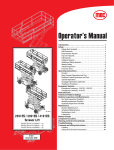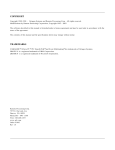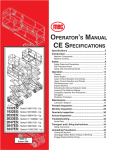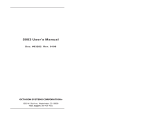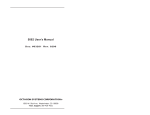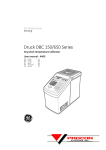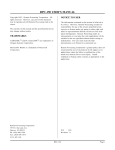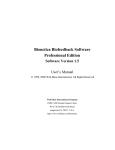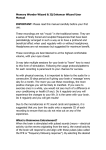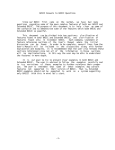Download BASIC PRECOMPILER User`s Manual
Transcript
COPYRIGHT © 1979 by
Technical Systems Consultants, Inc.
111 Providence Road
Chapel Hill, North Carolina 27514
All Rights Reserved
COPYRIGHT INFORMATION
This entire manual is provided for the personal use and enjoyment of the purchaser. Its
contents are copyrighted by Technical Systems Consultants, Inc., and reproduction, in
whole or in part, by any means is prohibited. Use of this program, or any part thereof,
for any purpose other than single end use by the purchaser is prohibited.
DISCLAIMER
The supplied software is intended for use only as described in this manual. Use of
undocumented features or parameters may cause unpredictable results for which Technical
Systems Consultants, Inc. cannot assume responsibility. Although every effort has been
made to make the supplied software and its documentation as accurate and functional as
possible, Technical Systems Consultants, Inc. will not assume responsibility for any
damages incurred or generated by such material. Technical Systems Consultants, Inc.
reserves the right to make changes in such material at any time without notice.
Index
1. Introduction ....................... 2
1.1 conventions .................. 3
1.2 definitions .................. 3
2. Getting the system started ......... 4
3. Features ...........................
3.1 variable names ...............
3.2 line labels ..................
3.3 continuation of lines ........
3.4 compiler options .............
6
6
7
7
8
4. Error messages ..................... 10
5. Adapting to your system ............ 12
Appendix .............................. 14
BASIC PRECOMPILER User's Manual
1.
INTRODUCTION
Technical Systems Consultants' BASIC PRECOMPILER (PC) and EXTENDED
BASIC PRECOMPILER (XPC) are designed to give the BASIC user greater
flexibility in writing programs, easier to read programs, and smaller
'compiled' files.
The precompilers accept BASIC source files and
convert to BAsic Compile files (.BAC) similar to the COMPILE command in
BASIC.
This should not be confused with BASIC compilers that generate
machine language code, because PC and XPC generate code that can only be
used with BASIC. This is the manual of the precompiler for both BASIC
and EXTENDED BASIC and for both the 6800 and 6809.
PC and XPC execute in two passes and will accept any size file on
the disk for input as long as enough memory is available for the symbol
table. Two types of output can be generated. The first one is a source
listing of the basic program complete with line numbered statements and
any error messages. The second is the compiled version of the program
ready to be executed by BASIC.
It is assumed that the reader is familiar with BASIC so detailed
programming examples are not given nor is the syntax of the BASIC
language explained.
-2-
BASIC PRECOMPILER User's Manual
1.1 Conventions
As in the BASIC User's manuals the following conventions will be
used. The statement or command being described will be printed in
capital letters. Angle brackets (<>) will be used to enclose essential
components of the statement. Square brackets ([]) will be used to
enclose optional components.
<essiental item>
[optional item]
1.2 Definitions
LOGICAL LINE
A logical line in BASIC can consist of one or more physical lines.
It may also consist of one or more basic statements separated by
either a back slash ('\') or a colon (':').
PHYSICAL LINE
A physical line is defined to be one line on a terminal ending with
a carriage return.
It also can be thought of as one line in the
editor.
LETTERS
The set of letters consists of the characters 'A' through 'Z' and
'a' through 'z'.
The underscore character ('_') is valid as a
letter also.
NUMBERS
The set of numbers consists of the characters '0' through '9'.
HEXADECIMAL NUMBERS
Hexadecimal numbers will start with a dollar sign ('$') and be
followed by four characters from the set of numbers and the set of
letters 'A' to 'F'.
SEPARATORS
The set of separators consists of
letter, number or an underscore.
-3-
any
character
that
is
not
a
BASIC PRECOMPILER User's Manual
2.
GETTING THE SYSTEM STARTED
Since there are not any built-in editing functions in the compilers
-- you must have a previous created source file on disk before using PC
or XPC.
The source must must be a standard FLEX source file which is
simply textual lines terminated with a carriage return. There should be
no control characters in the source file except for the carriage return.
THE FLEX COMMAND LINE
The syntax for calling PC or XPC is as follows:
PC <source file> [<compile file>] [+<options>]
or
XPC <source file> [<compile file>] [+<options>]
Where all file names are standard FLEX file names and default to the
current working drive. The <source file> is a previously edited file
containing
the BASIC source lines, <compile file> is optionally
specified as the name of a file to contain the result of the
compilation, and <options> is a list of options to be invoked when the
compiler is called.
The source file by default has an extension of .TXT as if it were
generated by the Text Editor. Optionally one can specify a different
extension (ie .BAS) or a drive other than the working drive (ie.
1.PROG) by just including it in the file name. For example:
+++PC PROG
will default to PROG.TXT on the working drive
+++PC PROG.BAS.1
over rides all filename defaults
The binary file, if not specified, defaults to the same name as the
source file but with the .BAC extension. Optionally, one may specify a
different name by just including it in the command line. For example:
+++PC PROG1.BAS P
will use as source PROG1.BAS on the working drive and write the binary
to P.BAC also on the working drive. If the file P.BAC already exists on
the working drive PC will ask the user if the file should be deleted
before starting. For example:
+++PC PROG1.BAS P
DELETE OLD BINARY (Y/N)?
If
N
is typed after the prompt, PC will quit and return to FLEX.
-4-
If Y
BASIC PRECOMPILER User's Manual
is typed, the file will be deleted and PC will continue on its way.
anything else is typed you will be prompted again for either Y or N.
If
Optionally, one may include compiler options on the command line.
The list of options must start with a plus sign ('+'), may not have any
imbedded spaces, and contain the following letters in any order.
B
Do not create the binary file. No binary file will be created even
if a binary file name is specified. This is useful when compiling
a program to check for any syntax errors or for a listing of the
program.
L
Suppress the source listing. If not specified, the compiler will
print each line as it is read in pass two.
Any lines containing
errors will automatically be printed regardless of whether or not
the option is specified. Also, imbedding a compiler $LIS or $NOL
option into the source will turn on or off the source listing.
S
S has no meaning whatsoever.
with the ASMB command.
N
Turn off line numbers. By default, line numbers are printed at the
beginning of each logical line. But if the source program already
has line numbers, like a normal basic program, more line numbers
would only be confusing.
Y
Yes, go ahead and delete the binary file.
If binary is being
generated and the file already exists then specifying Y will over
ride the prompt to delete the file.
It is included just to be
compatible
Some examples:
+++PC PROG1 +LY
no listing, delete old binary
+++PC PROG1.BAS +NB
listing on, no line numbers or binary
+++PC PROG1 T +SLY
no listing, binary on T.BAC on the work drive,
automatically delete existing binary file
The compilers do not have a built-in method to output to a hardcopy
device. However, this operation is available through I/O redirection in
FLEX. For example:
+++P PC PROG1 +B
would cause the listing to be sent to whatever device was defined by the P
command in FLEX. For further details of the P command see the FLEX
User's Manual and the FLEX Advanced Programmer's Guide.
-5-
BASIC PRECOMPILER User's Manual
3.
FEATURES
Four things stand out as the main features of PC and XPC.
(1)
(2)
(3)
(4)
They are:
unlimited length variable names;
unlimited length label names;
continuing logical lines across physical line boundaries;
pagination control for listings.
Each feature will be discussed in detail below.
3.1
Variable Names
Variable names may be of any length and may contain letters,
numbers, and the underscore character ('_').
The name cannot be a
keyword (see appendix A for list of keywords), the first character must
be a letter or an underscore, and the name must be terminated by a blank
or separator.
Also the name cannot start with the letters 'FN' unless
it is a call to or definition of a USER DEFINED function.
Lower case
letters are automatically mapped into upper case, therefore the name
'lower' is the same as the name 'LOWER'.
Some examples of variable
names are:
THIS_IS_A_VARIABLE_NAME
SO_IS_THIS
THIS_IS_A_STRING_VARIABLE$
_SO_IS_THIS_$
this_is_too$
FUNCTION_IS_A_FUNCTION_NAME
_THIS_IS_AN_INTEGER_VARIABLE%
_SO_IS_THIS_%
THIS_IS_A_DUPLICATE_NAME
this_is_a_duplicate_name
Some illegal variable names are:
1_CANNOT_START_A_VARIABLE_NAME
9CANNOT_START_A_VARIABLE_NAME_EITHER
CLOSE
variable names cannot be keywords
Dummy variable names are an exception.
They are limited to 30
characters in length.
Since the compiler must "remember" the dummy
variable when defining the user defined function, a buffer of 30
characters is set aside for the name. This is not really a restriction,
since it is common practice to use a single character to define the
dummy variable. For example:
DEF FNCTION1(X) = SQR(X + X)
Defines function 'FNCTION1' with dummy variable 'X'.
-6-
BASIC PRECOMPILER User's Manual
3.2
Line Labels
BASIC normally requires an integer line number on every source line
of the program. PC and XPC, on the other hand, only require a label on
a line that program control will be transferred to. Also, the label
need not be an integer, it can be any contiguous series of characters
consisting of letters, numbers and underscores. Any other character
terminates the label name. All statement labels must begin in column
one, and statements must start in column two or beyond. Some examples
are:
THIS_IS_A_LABEL REM THIS IS A REMARK STATEMENT WITH A LABEL
1000
REM THAT WAS THE LABEL '1000'
THIS_IS_A_LABEL_WITHOUT_A_STATEMENT
0000
REM NOTE THAT 0000 IS A LEGAL LABEL NAME
GOTO 0000 \REM IS A VALID STATEMENT; BUT
GOTOOOO0 \REM DEFINES A VARIABLE 'GOTOOOOO'
3.3 Continuation of Lines
PC and XPC allow BASIC lines (logical lines) to be split across
physical line boundaries or in other words, a logical line consists of
one or more physical lines. To do so, just place a backslash ('\')
before the carriage return. PC and XPC treat the back slash-carriage
return on continued lines simply as a blank. This means that variable
names and keywords cannot be continued onto the next line since the
blank is a separator. Also, the total length of the logical line must
not exceed 255 characters or the error message 'LINE TOO LONG' will be
generated. It should be noted that multiple spaces are ignored except
inside of strings where they are significant. For example:
IF DELTA% <= GAMMA% THEN PRINT 'DELTA ='; DELTA% \<CR>
ELSE PRINT 'GAMMA ='; GAMMA% <CR>
* DEFINE RECORD I/O BUFFER
FOR I=0 TO NUMBER_ELEMENTS :
FIELD 1, I*ELEMENT_SIZE AS G$,
15 AS FIRST_NAME$(I),
15 AS LAST_NAME$(I),
09 AS SOC_SEC_NU$(I),
02 AS INDEX$(I) :
NEXT I <CR>
\<CR>
\<CR>
\<CR>
\<CR>
\<CR>
In the first line of the example, the IF-THEN-ELSE statement is
compiled as one logical line even though it is split across two physical
lines.
Notice that a REMark statement after the THEN portion would
-7-
BASIC PRECOMPILER User's Manual
cause the ELSE statement to be ignored, since REMarks stop at the end of
the LOGICAL line. The next logical line is the line that begins with an
asterisk in column one. This is a REMark line and is ignored by the
compiler.
The last logical line consists of seven physical lines
starting with the FOR statement and ending with the NEXT statement.
Even though seven physical lines are involved, only three basic
statements are used. If more than one statement is on a logical line,
the statement must be seperated by either a colon (:) or a backslash
(\).
A backslash-carriage return does not act as
a
statement
terminator.
3.4 Compiler Options
As the above example shows, any line that starts in column one with
a separator is considered to be a comment line.
In most cases, a
comment line is ignored by PC and XPC. If the comment starts with a
dollar sign ('$') in column one then the line is checked to see if it is
a compiler option line. The following options are recognized:
TTL <string>
TTL sets the program title to <string>. The title may be 0 to 35
characters long. If the <string> is longer, anything past the
35th character is ignored.
The title string is printed left
justified on the same line as the date and compiler name.
STTL <string>
STTL sets the program sub-title to <string>. The sub-title may be
O to 80 characters long.
If the <string> is longer than 80
characters, anything past the 8Oth charcter is ignored.
The
sub-title string is printed left justified under the title line.
PAG
The PAG option causes a page eject to occur. Normally, a page
eject is performed every 55 lines but by using the PAG option one
can cause a premature page eject.
See also Adapting to Your
System.
SPC <n> [, <m>]
The SPC command causes <n> blank lines to be inserted into the
listing. Optionally the <m> parameter can be specified which is a
keep count. If there are less than <m> lines left on the page
then instead of spacing <n> lines, a page eject is performed and
processing of the space command is terminated. This is useful to
prevent a block of lines from being split across a page.
-8-
BASIC PRECOMPILER User's Manual
LIS
LIS is used to turn on the listing option.
already on then the LIS option is ignored.
If the list option is
NOL
NOL is used to turn off the listing option. If the list option is
already turned off then the NOL option is ignored.
LIB <file name>
The LIB option tells the compiler to start reading the source from
an alternate file. The <file name> should be in the normal FLEX
format, and will have the same defaults as the source file name
did on the command line. A file that is being 'LIBed' in cannot
have a LIB option in it. That is, LIB options cannot be nested or
recursive.
SCALE <n>
The SCALE command is available only in XPC.
It sets the SCALE
factor to <n> where 0 <= n <= 6. The SCALE option must be the
first line of the original source file. If an error occurs in the
SCALE option the SCALE factor is set to zero. See the EXTENDED
BASIC User's manual for use of the SCALE factor.
Some examples using options are:
$
$
$
$
$
$
$
$
$
SCALE 3
set scale factor to 3, on the first line
TTL this is the title up to 35 chr long
STTL this is the sub title, up to 80 characters long
PAG
perform a page eject
SPC 3
skip 3 lines
NOL
turn listing off for FILE1
LIB FILE1
read FILE1
LIS
Turn listing back on for FILE2
LIB FILE2
read FILE2
END
-9-
BASIC PRECOMPILER User's Manual
4.
Error Messages
There are two types of error messages that can be generated by the
compilers. The first type is from errors found on the command line
calling PC or XPC from FLEX. The errors are:
ILLEGAL OPTION SPECIFIED
An unknown option character was found after the plus sign.
ILLEGAL FILE NAME
A file name
format.
was
specified
that
was
not in the standard FLEX
MEMORY OVERFLOW
Not enough memory was available to insert a symbol into the symbol
table area.
This can mean that the program has too many symbols
to compile or that the MEMEND value in FLEX was set too low. Each
program label requires the number of characters in the label plus
5 bytes for flags.
Each variable requires the number
of
characters in the variable name plus 1 byte plus 8 bytes for
double precision, 4 bytes for single precision, or 4 bytes for
strings, arrays, and user defined functions.
The second type of errors are source code errors.
UNBALANCED PARENS
An expression has unbalanced parentheses.
UNRECOGNIZABLE CHARACTER
A character was seen that has no meaning to the compilers.
MISSING QUOTE
A closing quote was missing from a string constant. Since strings
cannot cross physical line boundaries, if an end of line is seen
before a closing quote this error is generated.
DUPLICATE LINE LABEL
Two lines have the same label.
UNDEFINED LINE LABEL
A reference to a label that does not exist was made.
BAD CONSTANT
An error was detected when trying to convert an ASCII number to
binary.
The number could be too large, too small, or contain an
illegal character.
DUMMY VARIABLE NAME TOO LONG
Dummy variable names can be a maximum of 30 characters long.
ILLEGAL SCALE FACTOR
This error is in XPC only.
The SCALE factor was
-10-
too
large,
too
BASIC PRECOMPILER User's Manual
small, or the SCALE
original source file.
option
was
not
on the first line of the
NESTED 'LIB' FILES NOT ALLOWED
A file being read in via 'LIB' had a 'LIB' option in it.
LINE TOO LONG
One of two things can cause this error. If the error occurred and
went immediately back to FLEX then the input source was longer
than 255 characters (including continued lines).
If the error
message was printed and the compiler continued on to the next
line, then the binary generated for that line was greater than 255
bytes.
-11-
BASIC PRECOMPILER User's Manual
5.
Adapting to your system
Since the precompilers run under the FLEX operating system, there is
very little adapting to be done.
None the less, there are three
constants that the user can change;
(1) the page eject string that is sent to a printer,
(2) the number of lines on a page and,
(3) the number of blank lines at the top of a page.
The page eject string is sent to the printer to position the print
head to the top of the next page. The eject string consists of a
carriage return, line feed, form feed, and three null characters
terminated by an ETX ($0004) character. The user may change the first
six characters to anything else as long as the string is no more than
six characters long and is terminated by the ETX character. One can
disable the page eject string completely by placing an ETX as the first
character of the string.
The page size is the number of lines to be printed on a page before
a page eject is to be performed. Initially, this is set to 55 lines.
That is, the page is assumed to be 55 lines long PLUS the number of
lines defined by the margin count PLUS five lines for the page heading.
The margin count is initially set to 3.
This means, after the page
eject is performed three blank lines are printed. Then the title and
sub-title lines are printed followed by three blank lines.
Then 55
lines of source followed by a page eject and so on and so forth.
It should be noted that printing the page eject string is suppressed
if output is going to the terminal. So if you are listing a program at
a terminal that understands form feeds, the page eject won't clear the
screen on every new page.
The precompilers use as end of memory the address MEMEND defined in
FLEX. As the precompilers read in source, labels and variable names are
put in a symbol table. The symbol table starts at the end of the
program and "grows" towards the end of memory. As a consequence, any
other program to be kept in memory with the precompilers must be higher
(read greater) than the address stored at MEMEND. The address of MEMEND
in FLEX 1.0 and FLEX 2.0 is $AC2B, and MEMEND in FLEX 9.0 is $CC2B.
For all versions of the precompiler the constants are located at:
EJECT STRING
PAGE SIZE
MARGIN COUNT
$0002
$0009
$OOOA
To change any of these constants do the following:
load the precompiler into memory with FLEX's GET command,
go into your systems monitor using FLEX's MON command,
-12-
BASIC PRECOMPILER User's Manual
change the constant(s),
go back into FLEX at the warm start entry point
($ADO3 for FLEX 1.0 and FLEX 2.0,
$CDO3 for FLEX 9.0),
save the precompiler back out on the disk using FLEX's SAVE command,
where the syntax is:
SAVE <file name> <start address> <end address> <transfer address>
and you have a new version of the precompiler.
The following table defines the start, end and transfer
addresses for each precompiler.
precompiler
----------PC for 6800
XPC for 6800
start
address
------$0002
$0002
end
address
------$12FF
$16FF
transfer
address
------$0100
$0100
PC for 6809
XPC for 6809
$0000
$0000
$12FF
$16FF
$0000
$0000
-13-
BASIC PRECOMPILER User's Manual
Appendix
The following is a list of all keywords defined in PC.
ABS
AND
AS
ASC
ATN
CHAIN
CHR$
CLOSE
COS
CVT$F
CVTF$
DATA
DEF
DIM
ELSE
END
ERL
ERR
ERROR
EXEC
EXP
FIELD
FN
FOR
FRE
GET
GOSUB
GOTO
HEX
IF
INPUT
INT
KILL
LEFT$
LEN
LET
LINE
LOG
LSET
MID$
NEW
NEXT
NOT
OLD
ON
OPEN
OR
PEEK
PI
POKE
P0S
PRINT
-14-
PTR
PUT
READ
RECORD
REM
RENAME
RESTORE
RESUME
RETURN
RIGHT$
RND
RSET
SGN
SIN
SPC
SQR
STEP
STOP
STR$
TAB
TAN
THEN
TO
USR
VAL
BASIC PRECOMPILER User's Manual
The following is a list of all keywords defined in XPC.
ABS
AND
AS
ASC
ATN
CHAIN
CHR$
CLOSE
COS
CVT$2
CVT$F
CVT2$
CVTF$
DATA
DATE$
DEF
DIGITS
DIM
DPEEK
DPOKE
ELSE
END
ERL
ERR
ERROR
EXEC
EXP
FIELD
FN
FOR
FRE
GET
GOSUB
GOTO
HEX
IF
INCH$
INPUT
INSTR
INT
KILL
LEFT$
LEN
LET
LINE
LOG
LSET
MID$
NEW
NEXT
NOT
OLD
ON
OPEN
OR
PEEK
PI
POKE
POS
PRINT
PTR
PUT
READ
RECORD
REM
RENAME
RESTORE
RESUME
RETURN
RIGHT$
RND
RSET
SGN
SIN
SPC
SQR
STEP
STOP
STR$
SWAP
TAB
TAN
THEN
TO
USING
USR
VAL


















